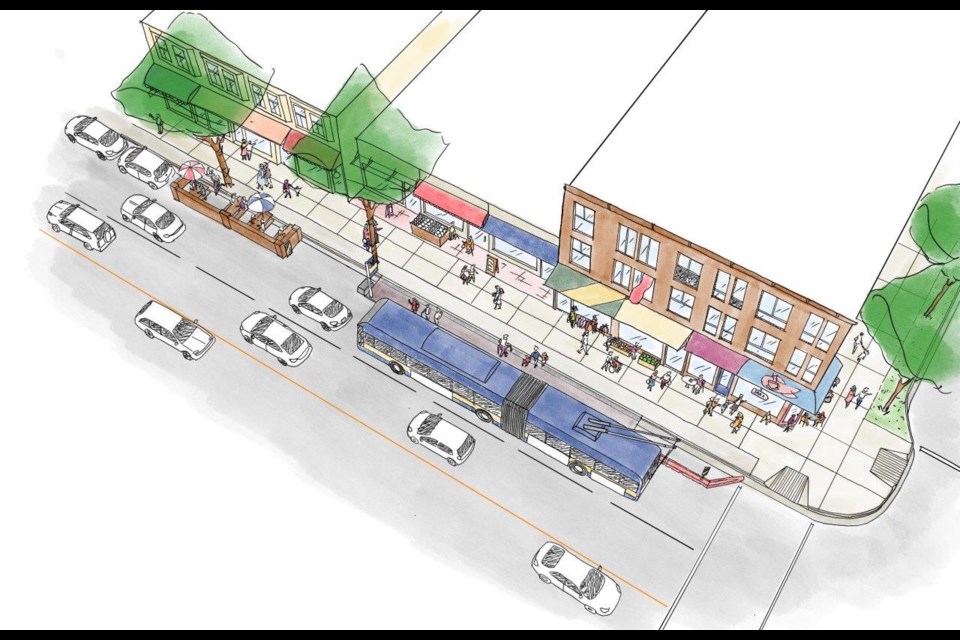Keen-eyed Vancouverites may have spotted islands of pavement popping up on West 4th Avenue.
They're called "bus bulbs" and are one of many current TransLink projects in the works in the city.
Essentially they are sidewalk extensions that bump out the bus stop into the parking lane with the intention of creating more space for people on sidewalks, increasing comfort for transit riders so busses aren't forced to change lanes or merge with traffic as often, and allowing buses to stop in travel lanes instead of parking lanes which would reduce their delays.
The bulbs are just one project of nine transit improvements currently in the works. The bulbs are only one of several improvements taking place on West 4th , including the introduction of six bulbs on that street, moving several existing bus stops down a block, creating right turn pockets for every block between Burrard and Balsam streets, and blocking off a new public plaza on Maple Street.
In 2019 the city found the frequent bus routes that connect West 4th to key destinations across the city like the 4, 7, 14, 44, and 84 are responsible for over 53,200 weekly bus trips beginning or ending in the area. TransLink’s Bus Speed and Reliability report also identified that the West 4th corridor was the 14th most delayed transit corridor in the region with the Burrard to Balsam experiencing the most significant congestion.
As a result, the City of Vancouver and TransLink have partnered to balance bus stops and try bus bulbs using interim materials in the hopes that they will make routes faster and more reliable.
Once completed the bus bulbs will be "connected to the sidewalk with a steel plate that will make it easily accessible from the sidewalk," a city spokesperson told Vancouver Is Awesome in an email. The gap between the sidewalk and bulb needs to be there for drainage purposes, but the steel plate is meant to make the transition between the two platforms seamless for strollers and wheelchair users.
According to a TransLink spokesperson, "the majority of work [on the bus bulbs] is expected to be complete by end of next week, with some minor works occurring until mid-Sept. There will be a steel cover for the gutter that will provide a flat surface connecting the sidewalk to the bus bulb. Plywood is being installed in the meantime with orange paint for visibility at the edges. The plywood will be in place for two to three months until the steel cover can be installed."
They add that "in general, bus bulbs do not impact traffic. It takes about 20 seconds for customers to get on and off the bus at each bus stop. That is the same amount of time it takes a motorist to parallel park. Cars can also merge into the next lane and go around the bus stop."
In theory, bulbs are also intended to create more space for community amenities such as patio seating, bike racks, and loading zones. There are currently fully-operational bus bulbs located on Robson Street between Burrard and Jervis streets, on Main Street at 14th Avenue, and between 18th Avenue and 30th Avenue.



